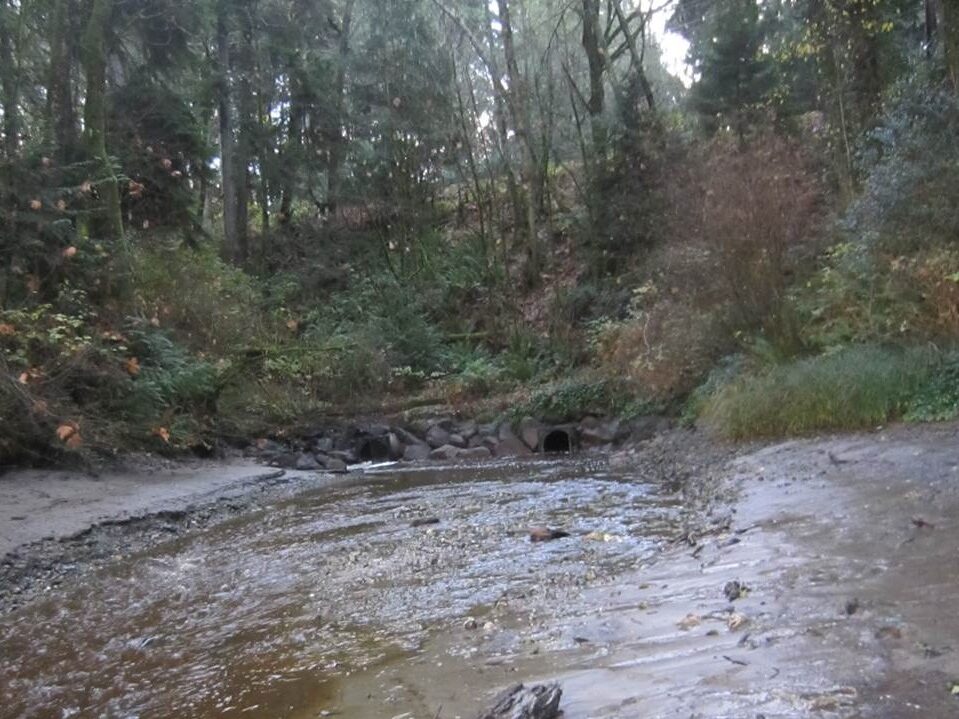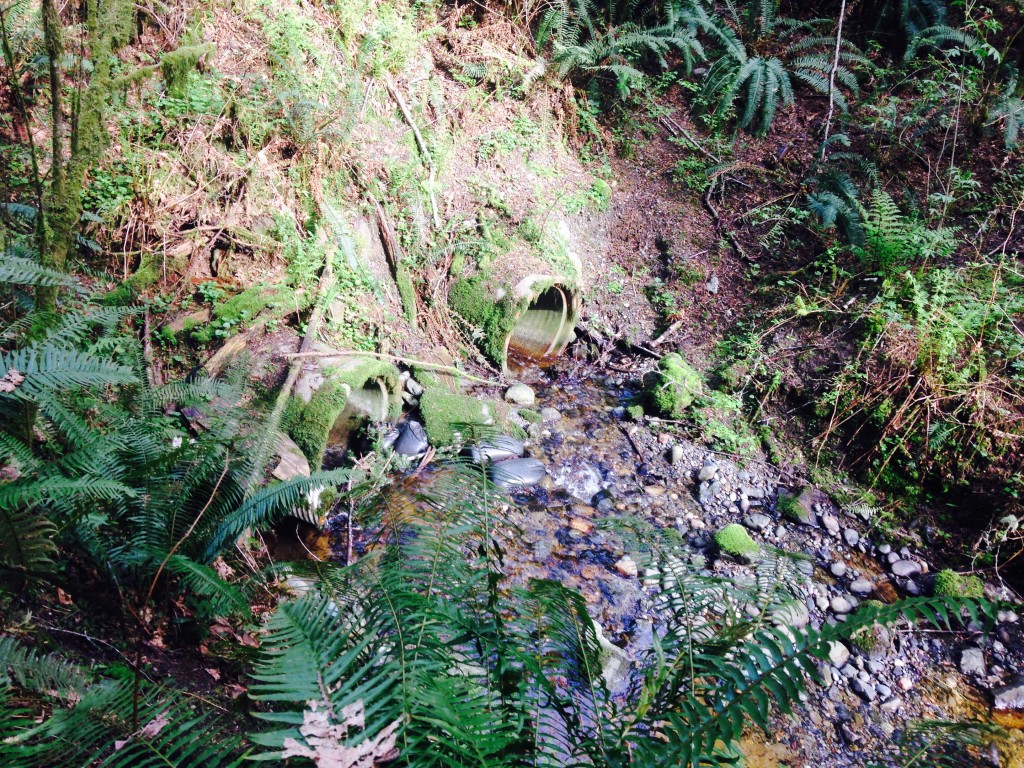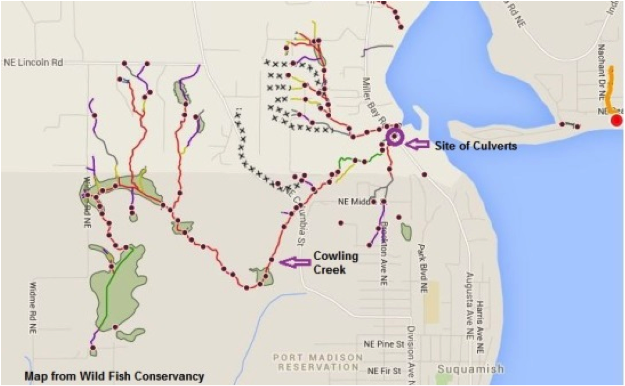Cowling Creek
Cowling Creek Culver Replacement – Feasibility Study
Cowling Creek is a special attribute of the Port Madison Reservation. The largest watershed on the reservation, it boasts 4.4 miles of fish-bearing stream, and an impressive array of wetlands. A 42-acre Cowling Creek Forest Preserve protects the lower stream course habitat. The Suquamish Tribe, Great Peninsula Conservancy, and Friends of Miller Bay jointly manage the Preserve for its natural resources.
The Suquamish Tribe’s Cowling Creek Center, located in the center of the Preserve, provides a unique educational opportunity. Over 2,000 visitors came to view the spawning salmon from late October to early December 2014. And thanks to the work of a local Girl Scout troop, there is now a trail for Suquamish Elementary School students to use to walk from school to view the spawning chum.
A Problematic Culvert
Wild salmon historically called this creek home until they were barred entrance to the creek by a pair of 36” culverts installed in the estuary in 1935 to construct Miller Bay Road N.E. Because the culverts eliminated anadromous fish from the watershed, the Tribe constructed their first hatchery on Cowling Creek in 1977. The hatchery was used to restore salmon that were extirpated from ten-local watersheds. This enhancement program ended in 2004. In 2006 the Friends of Miller Bay, Trout Unlimited, and the Mid Sound Fisheries Enhancement Group assisted the Tribe’s Salmon Recovery Program to reintroduce naturally spawning salmon.

Miller Bay culverts from downstream at low tide.

The culverts viewed from upstream.
Since 2006 volunteers raise and release between 60,000 to 90,000 fed chum fry from Cowling Creek Center’s educational incubation and rearing facility. Returning adult salmon were captured by net and trucked around the culvert obstacles. In 2014, Trout Unlimited volunteers built three fish ladders to allow the salmon unimpeded access upstream.
In Search of a Long-term Solution for Salmon
The Tribe and community are seeking a long-term solution that will not only pass salmon in the fall, but re-connect the stream and wildlife corridor to the estuary year-round. Replacing the Miller Bay Culverts with a larger structure will be no small feat. The culverts are buried under at 60 feet of road fill. County and Tribal officials require that the road not be closed due to limited by pass alternative routes. Consultation with experienced engineers, however, has led local residents and Mid Sound staff to believe that it may be possible to replace the culverts, without closing the road.
Whether such a solution is feasible – and if so, how much it might cost – cannot be determined without additional information. Mid Sound has recently received funding from the Salmon Recovery Funding Board, and will be working with Kitsap County to gather some of the geotechnical and physical information about the site. The result of the study will be an assessment of which of several technical solutions would be most feasible. It will also result in a conceptual design of possible restoration, and the estimated cost estimate for replacing the culverts.
Wild Fish Watershed Assessment
The Wild Fish Conservancy completed a watershed typing assessment in 2010 in which they mapped the entire watershed and documented the habitat, barriers, and opportunities to restore salmon throughout the watershed. Their interactive Cowling Creek watershed map can be viewed online. The Friends of Miller Bay removed two of the identified barrier culverts in 2011 and 2012.
